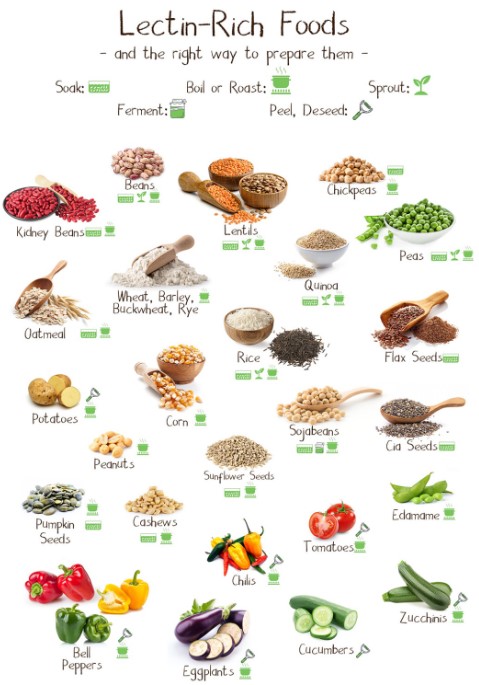BOURSESSENEGAL – When it comes to nutrition, lectins often spark heated debates. Some claim they can lead to various health issues, while others suggest they have unique benefits. In this blog post, we’ll dive deep into the world of, exploring what they are, their potential benefits and risks, and how you can manage them in your diet. By the end of this article, you’ll have a clearer understanding of how to approach in your meals.
What Are Lectins?
Lectins are proteins found in many plants, particularly in legumes, grains, and some vegetables. They play a role in how plants defend themselves against pests and diseases. In the human diet, can affect digestion and nutrient absorption. Understanding how these proteins function is key to determining their impact on your health.
Sources of Lectins
You’ll find lectins in a variety of foods. Here are some common sources:
- Legumes: Beans, lentils, and peas are particularly high in lectins.
- Grains: Wheat, barley, and rice contain moderate levels.
- Vegetables: Nightshade vegetables like tomatoes and potatoes also harbor lectins.
- Fruits: Certain fruits, like bananas and avocados, may contain lectins, but typically in lower amounts.
The Science Behind Lectins
Lectins bind to carbohydrates, which means they can interact with cells in the gut. This binding can affect gut health and influence the absorption of nutrients. Some research suggests that high levels of might lead to digestive issues or inflammation in sensitive individuals.
Potential Benefits of Lectins
Despite the controversies surrounding them, lectins can offer certain benefits when consumed in moderation.
1. Nutrient Absorption
Interestingly, lectins can promote nutrient absorption. They might enhance the bioavailability of certain minerals. For example, when combined with other foods rich in nutrients, can aid in better absorption of vitamins and minerals.
2. Antioxidant Properties
Some studies indicate that lectins can act as antioxidants. They help combat oxidative stress, which is linked to various chronic diseases. Incorporating lectin-rich foods might support overall health by reducing inflammation.
3. Supporting Gut Health
Certain types of lectins may promote gut health. They can act as prebiotics, stimulating the growth of beneficial gut bacteria. A healthy gut microbiome is essential for digestion, immune function, and overall well-being.
The Risks Associated with Lectins
While there are benefits, it’s crucial to consider the potential risks of consuming lectins, especially in excessive amounts.
1. Digestive Issues
High lectin consumption can lead to gastrointestinal discomfort. Symptoms like bloating, gas, and diarrhea may occur in some individuals. If you’re sensitive to, you might experience these issues more intensely.
2. Inflammation
For some people, especially those with autoimmune conditions, can trigger inflammatory responses. This reaction can exacerbate symptoms and lead to chronic health issues.
3. Nutrient Binding
may interfere with nutrient absorption by binding to carbohydrates in the gut. This binding can hinder the uptake of essential nutrients, potentially leading to deficiencies over time.
How to Manage Lectins in Your Diet
Understanding lectins is essential, but so is learning how to manage them in your daily meals. Here are some practical strategies:
1. Cook Your Foods
Cooking is one of the most effective ways to reduce lectin levels. Boiling, baking, or pressure cooking can significantly decrease the lectin content in foods. For example, properly cooking beans makes them safer and easier to digest.
2. Soak Legumes and Grains
Soaking legumes and grains before cooking can help leach out some. This simple step can enhance their digestibility and nutritional value.
3. Choose Whole Foods
Opt for whole foods that are rich in nutrients but lower in. Fresh fruits, vegetables, and lean proteins can provide a balanced diet while minimizing lectin intake.
4. Monitor Your Body’s Response
Listen to your body. If you notice discomfort after consuming lectin-rich foods, consider reducing your intake. Everyone’s tolerance levels differ, so pay attention to what works for you.
5. Balance Your Diet
Incorporate a variety of foods to ensure you get all necessary nutrients. A balanced diet can help offset any potential negative effects.
Conclusion
In summary, lectins are fascinating proteins that can have both beneficial and adverse effects on health. Understanding their role in your diet allows you to make informed choices. While they may pose risks for some, they also offer unique benefits when managed appropriately.
By cooking foods, soaking grains and legumes, and maintaining a balanced diet, you can enjoy the advantages of while minimizing any potential drawbacks. Remember, it’s all about finding what works best for your body and lifestyle.
REFERENCE : https://www.cdcfoundation.org/



